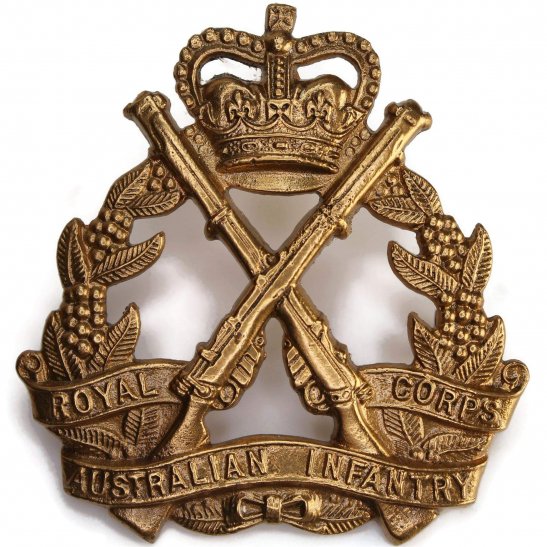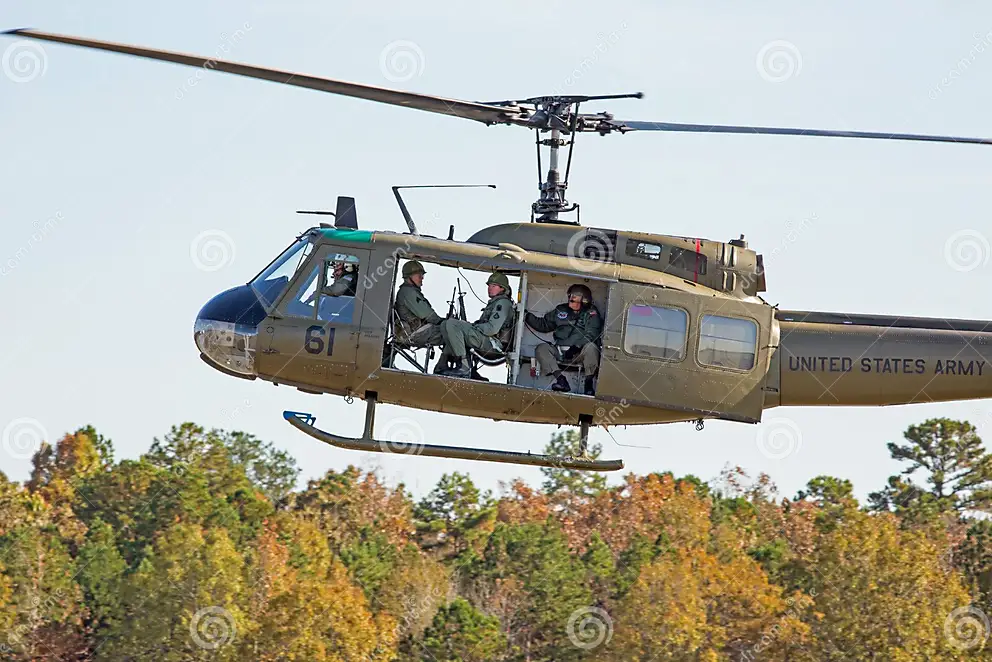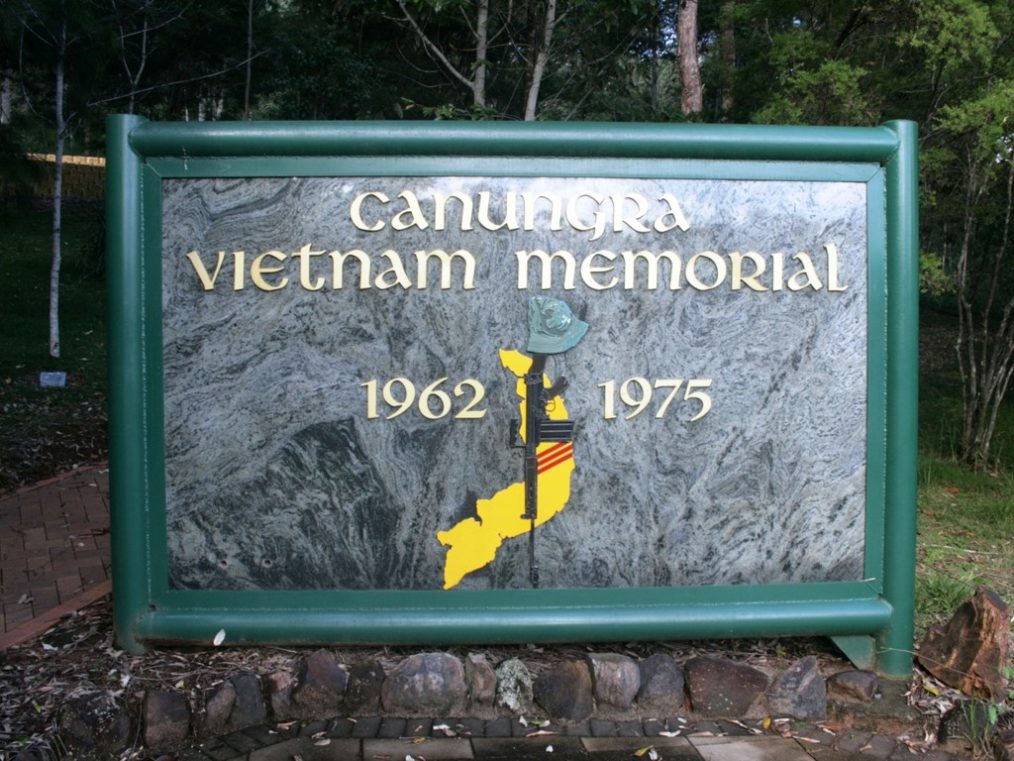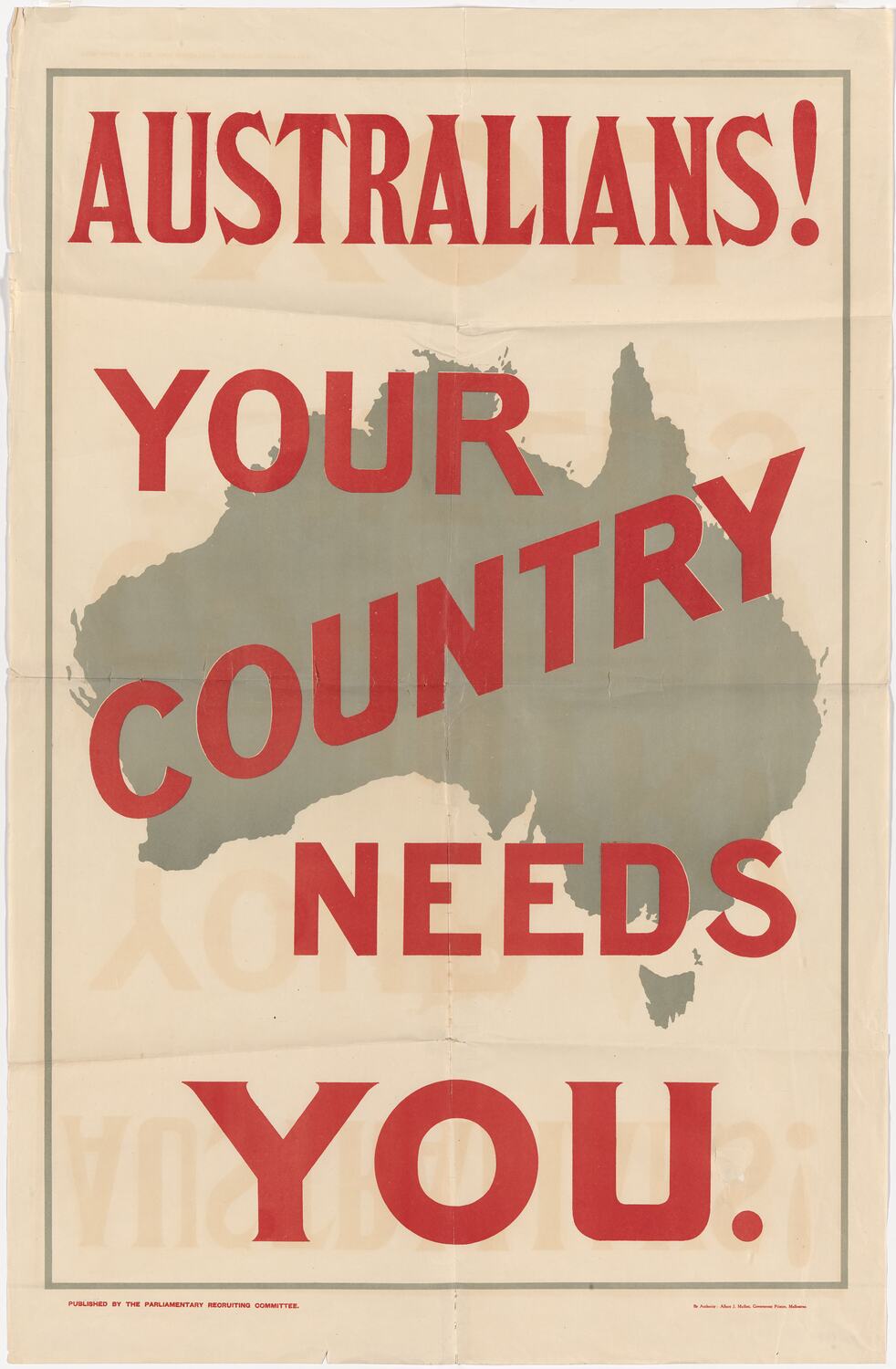Australian Army Infantry the Truth is an overview of the qualities and the stoic requirements to serve within the Australian Army Infantry the Royal Australian Regiment and the School of Infantry that is the home of the training of the Infantry soldier and its specialist courses as well as promotion courses and the Infantry Regimental Officers Basic Course. The video presentation is called the Truth as it does not gloss over the current watered down nerf version of recruiting ads on mainstream ads for the Australian Defence Force the ADF. The Royal Australian Regiment is one of one and we need more to be honest, and this is a way as an Australian Infantry Veteran I can do my bit to welcome the next generation of capable, brave and resourceful young adults to try a career of adventure and mate ship as well as sacrifice of luxuries such as warmth, comfort and safety. Create a legacy and see all that you can be within the Royal Australian Regiment.
Considering the current events in the Middle East, let’s delve into a thought-provoking perspective. The following reflects on an article penned by Spanish writer Sebastian Vilar Rodriguez, which was published in a Spanish newspaper. While the context is specific to Barcelona, the message resonates beyond Europe, possibly impacting the global outlook.
The revelation occurred as the author strolled through the streets of Barcelona, leading to a sombre acknowledgment: Europe, as we once knew it, perished in Auschwitz. The author draws attention to a painful historical truth—the loss of six million Jews, a community that represented a wealth of culture, thought, creativity, and talent. The void left by their absence was filled by a subsequent influx of 20 million Muslims.
The author laments the tragedy of Auschwitz, where a unique group of people, truly chosen for their significant contributions to the world, was extinguished. The Jewish people, he argues, played a pivotal role in shaping various aspects of life, including science, art, international trade, and serving as the conscience of the world. The author prompts us to consider the potential greatness that was erased with the six million lives lost.
Under the guise of tolerance, Europe, seeking to distance itself from the stains of racism and bigotry, opened its doors to 20 million Muslims. The author contends that this well-intentioned move resulted in the importation of challenges such as ignorance, religious extremism, lack of tolerance, crime, and poverty. He highlights the perceived unwillingness of some members of this group to work and support their families independently.
The consequences, as described, paint a grim picture—train bombings, the transformation of once-beautiful cities into hubs of filth and crime, and a perceived plot against their generous hosts from within government-supported apartments. The author argues that Europe, in its pursuit of tolerance, inadvertently traded culture for fanatical hatred, creative skill for destructive tendencies, and intelligence for backwardness and superstition.
The narrative takes a poignant turn as the author addresses the recent debate in the UK about whether to remove The Holocaust from the school curriculum due to alleged offense to the Muslim population. The author expresses concern about the world succumbing to fear and appeasement, emphasizing the importance of remembering historical atrocities.
The narrative concludes with a call to action, urging readers to participate in a memorial chain for the victims of various atrocities, emphasizing the need to ensure that the world “never forgets.” The final plea invokes the risk of historical events being denied or forgotten, drawing parallels to potential denial of the World Trade Centre attack by some Muslims in the United States.
In essence, the article encourages reflection on historical tragedies and prompts readers to consider the implications of cultural shifts and historical omissions in the face of contemporary challenges.
“If you do not take an interest in the affairs of your government, then you are doomed to live under the rule of fools.”
—Plato
ED: If you can help please email Ken at kmwriedt@iinet.net.au
G’day Ray
I dropped you an email back in early October, but I think went to an incorrect address.
No doubt you have plenty on your plate, but I am seeking your assistance.
My name is Ken Wriedt, and I am looking for Robert Edwards (3791170) and I was referred to you by the secretary of 1RAR Association.
In a past life, he and I worked in the Commonwealth Bank, got conscripted and went to Vietnam.
I am now attempting to garner together as many ex-CBA Victorian ‘Nasho’s’ with a view to a get together sometime in 2024.
If you have details of Robert, I would appreciate it you could onforward this email to him.
Many thanks
Cheers
Ken Wriedt
HQ 1ALSG 69/70
Two ballistic missiles were launched from Houthi-controlled areas in Yemen towards the USS Mason, a destroyer of the Arleigh-Burke class, as reported by U.S. Central Command on Sunday night. The missiles landed approximately 11 miles from the ship in the Gulf of Aden, causing no injuries or damage. In response to a distress call from the commercial ship M/V Central Park, the USS Mason, part of the Eisenhower Carrier Strike Group, intervened. After arriving, coalition forces demanded the release of the vessel. Subsequently, five armed individuals disembarked from the ship, attempting to escape in a small boat. The USS Mason pursued, leading to the eventual surrender of the attackers.
The M/V Central Park, described as a tanker carrying phosphoric acid with an international crew of 22, was confirmed to be safe by CENTCOM. The missiles were fired early Monday morning local time as the USS Mason was completing its response to the distress call.
Yemen’s Houthi rebels, who control the capital Sanaa, provided no comment on the incident. However, Yemen’s internationally recognized government, based in Aden, accused the rebels of the attack, denouncing it as an act of maritime piracy with the support of the Iranian regime.
The attack occurred in a part of the Gulf of Aden theoretically under the control of the Yemeni government’s forces, distant from Houthi-controlled territory. Zodiac Maritime has previously been targeted in the ongoing shadow war between Iran and Israel. The UK Maritime Trade Operations issued a warning about suspicious craft in the area, and the Central Park’s location was reported over 35 miles south of Yemen’s coast in the Gulf of Aden.
The incident with the Central Park follows an attack on another Israeli-owned ship, the CMA CGM Symi, in the Indian Ocean. The Symi and the Central Park had both turned off their Automatic Identification System trackers, raising concerns about potential threats. Global shipping has become a target amid the Israel-Hamas conflict, with recent incidents involving Houthi seizures and attacks on vessels. Analysts suggest that such attacks serve to support Iran and strengthen the Houthis’ position in Yemen.
Secret plans to send the United States the Rohingya child sex predator, who triggered the High Court precedent which led to dozens of criminals being released, has cast doubt on Labor’s claims it was caught off guard by the decision.
Home Affairs Minister Clare O’Neil has maintained her advice was that the Commonwealth would win the case, but when it failed, the decision paved the way for at least 141 detainees, including pedophiles and murderers to be released into Australian streets.
Documents obtained by Sky News Australia paint a different story about the Commonwealth’s confidence in the case, and detail attempts to resettle the Rohingya man, known only as NZYQ, in the United States.
“The frequency and nature of the email correspondence between Home Affairs department officials appears to call into question the minister’s statements on Sunday Agenda a week and a half ago that her department had advised her the government was likely to win the case,” Sky News Political Editor Andrew Clennell said.
The Home Affairs Minister previously told Sky News Australia the department “knew it was 20 years of legal precedent, and we were advised that it was likely that the Commonwealth would win the case”.
During the interview, Ms O’Neil declined to say when the advice was received.
“But the emails tendered to the Home Court show the Home Affairs department was contacting the Australian embassy in the US and asking them to lobby the state department to resettle the detainee,” Mr Clennell said.
Bob Wright, retired United States Air Force F-16 pilot, poses for a photo. After retirement his son Jett followed in his footsteps, becoming an F-16 pilot and getting the chance to fly the same aircraft. U.S. Air Force courtesy photo
On February 28, 1994, during Operation Deny Flight—a NATO mission aimed at enforcing a U.N. no-fly zone in the Balkans conflict—then-Captain Robert Gordon “Wilbur” Wright piloted an aircraft. This significant event, known as the Banja Luka incident, unfolded when six Serbian J-21 Jastreb fighters attacked a factory. Responding to the threat, two Air Force F-16s from the 526th Fighter Squadron, based in Aviano, engaged the attackers.
In the course of the encounter, Captain Wright achieved a hat trick of kills, downing three Serbian J-21s in a matter of minutes using an AIM-120 AMRAAM and two AIM-9 Sidewinders, as documented by the U.S. Air Force. Simultaneously, another F-16 piloted by Captain Stephen L. “Yogi” Allen shot down a fourth J-21 on the same day. Notably, a fifth Serbian J-21 was also lost, but it is not officially recorded as a kill for a U.S. fighter.
The UH-1 “Iroquois,” commonly known as the Huey, played a crucial role as the primary helicopter utilized by the Army during the Vietnam War. Initially designated as HU-1, its name derived from the phonetic sound of the original designation. The evolution of military helicopters, a technology that began developing during World War II, saw significant progress by the Korean War with models like the OH-13 “Sioux” and the USAF H-19, which served in resupply and medical evacuation roles. Insights gained from the experiences of these early helicopters contributed to the development of the UH-1.
By 1958, the initial shipments of Hueys arrived in Vietnam and were employed by American advisors in medical evacuation missions known as “dustoff.” As the Vietnam War progressed, the Army expanded the helicopter’s role beyond medevac, utilizing it for various operations, including troop and supply transport, as well as direct combat gun support.
The portrayal of Huey helicopters flying with open doors in many Vietnam War films raises the question of whether this was a common practice. According to Patrick Holland, a former US Army officer who flew on UH-1 Hueys, there were several reasons for flying with open doors: the crew chief and gunner needed access to their weapons, loading and unloading in enemy territory was faster, and it served as the only form of air conditioning. He dismisses claims of individuals falling out as exaggerated war stories.
Gordon Wilson, a former US Army Colonel with experience flying aboard UH-1 Hueys in Vietnam, confirms that doors were typically open in the helicopters of the 101st Airborne Division. He acknowledges the possibility of someone falling out but notes that centrifugal force usually kept individuals inside, especially when orbiting tactical situations. Another former crew member, Paul DeNicola, recalls flying with open doors in the Delta, emphasizing that despite slippery conditions, no one slid out.
Jethro D., echoing the sentiment of other crew members, asserts that doors were always open due to the oppressive heat and unpleasant smells inside the Huey. He describes odours ranging from dried blood to unwashed bodies and vomit, emphasizing the necessity of open doors. Ray Mason, recalling his experience as a former UH-1 crew member, mentions that doors were closed at altitudes above 3000 feet to combat the cold. Additionally, he notes that door gunners sometimes wore field jackets for warmth, and the LOH-6 helicopters flew with doors off, not open.
A power plant need not be an unsightly structure obstructing views or casting shadows on its surroundings. In fact, it can serve as the focal point of a city’s most popular park. The Amager Bakke power plant, which he refers to, stands out as one of the world’s cleanest waste-to-energy facilities, thanks to cutting-edge technology that effectively filters its emissions.
Activated in 2017, Amager Bakke is a testament to innovation and sustainability. This eco-friendly power plant, located in Copenhagen, Denmark, is set to redefine perceptions of industrial structures. The facility, which cost €550 million ($600 million; £490 million) to construct, has been a nearly decade-long project. Remarkably, it seamlessly integrates functionality with public recreation, as evidenced by the opening of a ski area to the public on Fridays. The plant’s multi-faceted design not only addresses energy needs but also contributes to the community’s leisure and recreational spaces.
ED: Be sure to clink on the links at the bottom of the page.
I am a subscriber to Frontline and also on the committee of the above project. (ex 6RAR SVN 66/67 – Sec of Runaway Bay RSL SB) I have not seen any reference to this in your regular missives, so here it is. I ask if you could please include in a future issue.
Briefly: the existing memorial was built in 2000 within the confines of the Canungra Army base. Access now is almost impossible due to entry conditions. The CO suggested Kokoda Youth Foundation relocate it to the main gate area where it would be accessible to everyone.
Our Runaway Bay RSL SB was invited to assist, and the project is now at completion.
Dedication Date: Friday 01 December 1100h on site, Kokoda Barracks, Canungra.
Dedicated by: Rev Maj Richard Brown MM, a Battle of Long Tan Veteran plus other dignitaries.
Would appreciate you including so that our Vietnam Vets within Australia will be aware.
Many thanks
Graham Gordon
Graham & Jan Gordon
607 Aqua 300 Marine Parade
Labrador Qld 4215 Australia
G.0417 631 941 J. 0418 918 815
CLICK LINK
Canungra Vietnam Memorial Relocation Project information (004)Media Release –
CLICK LINK
In contemporary Australian society, it’s evident that the younger generation, encompassing Millennials and Zoomers, is experiencing a waning sense of patriotism and connection to their nation. This sentiment, mirrored in Western societies at large, manifests in various ways – from economic concerns and housing market struggles to scepticism about the future. This disconnection poses a significant threat to traditional notions of national security and defence, as younger generations seem less inclined to protect a system they feel alienated from.
Older generations, particularly those who came of age in the post-war era, often dismiss these concerns, attributing them to perceived entitlement and a reluctance to put in effort. This intergenerational divide exacerbates the situation, with the expectation that younger individuals should be willing to defend a system in which they have little trust or investment.
A recent study by the Institute of Public Affairs (IPA) aligns with the notion of a decline in patriotism among younger Australians. Recruitment and retention challenges in various sectors, observed globally, are now more pronounced, impacting force generation and deployed capability.
In the Australian context, economic challenges, declining opportunities, and societal changes contribute to a perception that the system has failed young Australians. Factors such as limited access to housing, economic shifts towards a knowledge-based economy, and concerns about job security further reinforce this sentiment.
The impact of these challenges is reflected in public sentiment. According to Daniel Wild, director of research at IPA, cultural and media influences have fostered a sense of shame among young Australians, making them hesitant to defend their country. The IPA’s report reveals that a significant percentage of young Australians, when faced with the hypothetical need to defend their nation, express a preference to leave rather than stay and fight.
The article suggests that the traditional approach of valuing duty, honour, and country might be more effective than contemporary emphasis on individualism and diversity. The success of certain recruitment programs is highlighted as a testament to this approach.
The underlying theme is a growing disconnection, apathy, and helplessness felt by many Australians, especially the younger generation, amid global uncertainties and socio-economic challenges. This poses a considerable threat to national security, demanding immediate attention and remedial action.
As Australia navigates a rapidly evolving geopolitical landscape, characterized by the rise of powers in the Indo-Pacific region, it is imperative for policymakers and the public alike to adopt a more strategic and forward-thinking approach. The article emphasizes the need for a comprehensive analysis and response to these challenges, urging a collective effort to secure Australia’s role in an era of increasing global competition.










